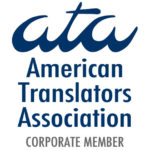When learners of any non-native language reach a level of intermediate-to-advanced comprehension, new preoccupations emerge. In English, we might describe one of these as “speaking so it sounds right”, but of course the crux of this—“sounds”—is not so simple as the statement suggests.

Free image courtesy of FreeDigitalPhotos.net
One obvious sort of “sound” is pronunciation, the predictable ways of saying vowels and consonants. For native English speakers learning Spanish, this is above all an effort of repetition, as the pronunciation of all vowels and (most) consonants is fixed. Once you learn the patterns, you’ve just got to practice. There are several variations, though; for example, the pronunciation of ll and y.
For native Spanish speakers learning English, however, the process is not so simple. Although Spanish, like English, varies from region to region, these varieties are, once learned, predictable. Pronunciation variance only truly exists for Spanish speakers who are exposed to multiple Spanish-speaking regions. This is not the case for English, whose pronunciation system is fundamentally varied. An easy example is the pronunciation of the a in cat versus that in cape. The “rules” are complex and imperfect and, to an extent, mastering pronunciation is a process of trial-and-error.
Another sort of “sound” is the rhythm or isochrony of a language, and with this both English and Spanish learners struggle. For native English speakers learning Spanish, the language can seem faster than their mother tongue, whereas for native Spanish speakers learning English, the latter can seem slower or unpredictable. Again, a fundamental difference emerges here: Spanish is “syllable-timed”, and English is “stress-timed”.
Basically, in Spanish, all of the syllables should take the same amount of time to say. Because the frequency varies from speaker to speaker (and from time period to time period), it is not accurate to generalize Spanish as a “faster” language. In English, syllables last different amounts of time, but without any sort of diacritical indicators. This is an understandably complicated system for many native Spanish speakers. Ostensibly, one could perfectly understand written English without having the slightest idea of how to correctly read it aloud.
However, it’s also worth noting that these categorizations are imperfect—most notably with respect to the syllable breakdown in Spanish. In poetry especially, but in everyday speech as well, Spanish often exhibits elision, or the limiting or even complete omission of syllables. This most commonly occurs in the present perfect form; for example, when saying he elegido (I have chosen), likely the first two syllables would be nearly synthesized to one. This is understandably difficult for non-native Spanish speakers to recognize in speech, let alone authentically reproduce.
Keeping these aspects of sound in mind, both English and Spanish learners will be able to not only speak more correctly, but improve their listening comprehension skills. Furthermore, reading in the second language will achieve new texture, for the voices—be they of particular characters or the narrator—will begin to resonate on more than a visual level.
When learners of any non-native language reach a level of intermediate-to-advanced comprehension, new preoccupations emerge. In English, we might describe one of these as “speaking so it sounds right”, but of course the crux of this—“sounds”—is not so simple as the statement suggests.
One obvious sort of “sound” is pronunciation, the predictable ways of saying vowels and consonants. For native English speakers learning Spanish, this is above all an effort of repetition, as the pronunciation of all vowels and (most) consonants is fixed. Once you learn the patterns, you’ve just got to practice. There are several variations, though; for example, the pronunciation of ll and y.
For native Spanish speakers learning English, however, the process is not so simple. Although Spanish, like English, varies from region to region, these varieties are, once learned, predictable. Pronunciation variance only truly exists for Spanish speakers who are exposed to multiple Spanish-speaking regions. This is not the case for English, whose pronunciation system is fundamentally varied. An easy example is the pronunciation of the a in cat versus that in cape. The “rules” are complex and imperfect and, to an extent, mastering pronunciation is a process of trial-and-error.
Another sort of “sound” is the rhythm or isochrony of a language, and with this both English and Spanish learners struggle. For native English speakers learning Spanish, the language can seem faster than their mother tongue, whereas for native Spanish speakers learning English, the latter can seem slower or unpredictable. Again, a fundamental difference emerges here: Spanish is “syllable-timed”, and English is “stress-timed”.
Basically, in Spanish, all of the syllables should take the same amount of time to say. Because the frequency varies from speaker to speaker (and from time period to time period), it is not accurate to generalize Spanish as a “faster” language. In English, syllables last different amounts of time, but without any sort of diacritical indicators (i.e. link to http://en.wikipedia.org/wiki/Diacritic). This is an understandably complicated system for many native Spanish speakers. Ostensibly, one could perfectly understand written English without having the slightest idea of how to correctly read it aloud.
However, it’s also worth noting that these categorizations are imperfect—most notably with respect to the syllable breakdown in Spanish. In poetry especially, but in everyday speech as well, Spanish often exhibits elision, or the limiting or even complete omission of syllables. This most commonly occurs in the present perfect form; for example, when saying he elegido (I have chosen), likely the first two syllables would be nearly synthesized to one. This is understandably difficult for non-native Spanish speakers to recognize in speech, let alone authentically reproduce.
Keeping these aspects of sound in mind, both English and Spanish learners will be able to not only speak more correctly, but improve their listening comprehension skills. Furthermore, reading in the second language will achieve new texture, for the voices—be they of particular characters or the narrator—will begin to resonate on more than a visual level.
 Free image courtesy of FreeDigitalPhotos.net
Free image courtesy of FreeDigitalPhotos.net













